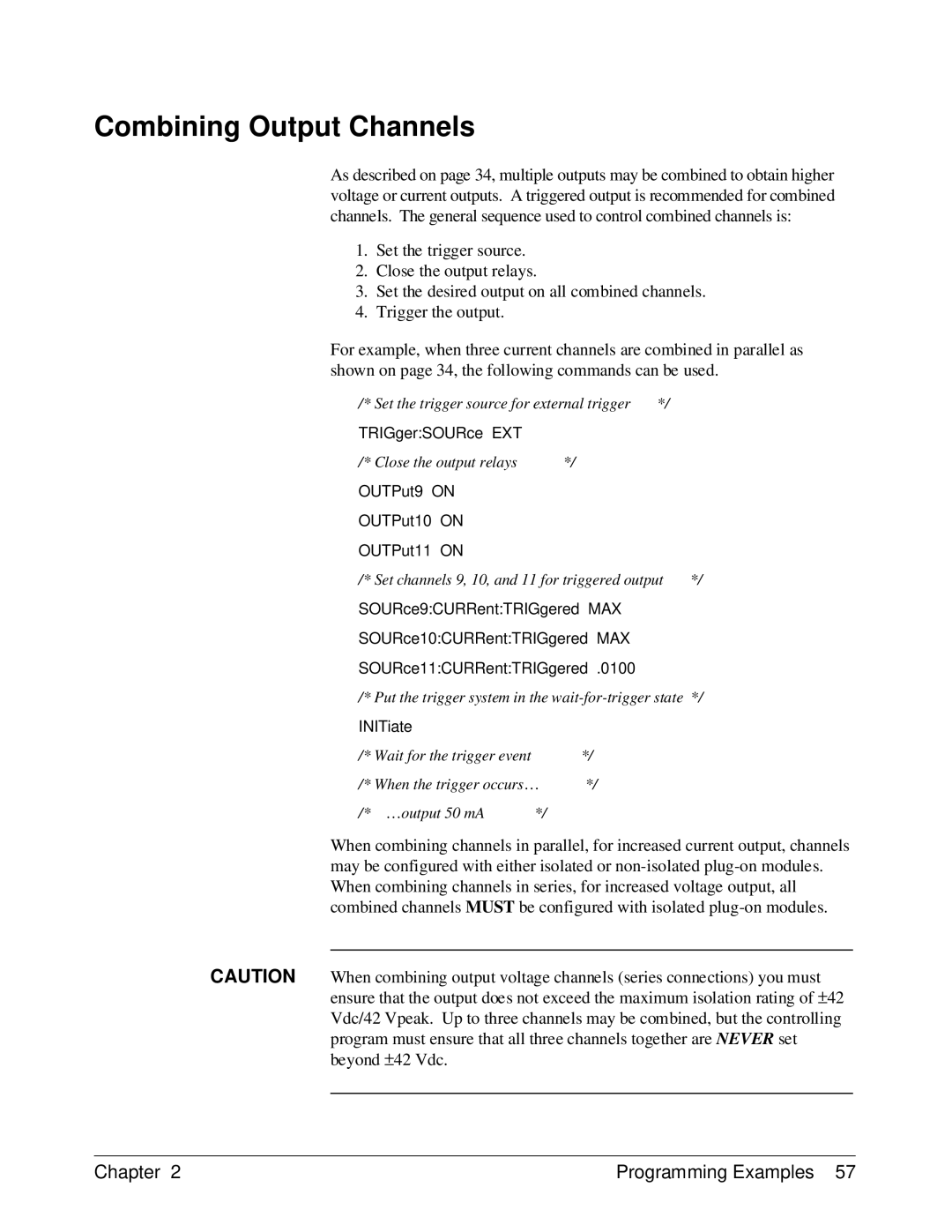
Combining Output Channels
As described on page 34, multiple outputs may be combined to obtain higher voltage or current outputs. A triggered output is recommended for combined channels. The general sequence used to control combined channels is:
1.Set the trigger source.
2.Close the output relays.
3.Set the desired output on all combined channels.
4.Trigger the output.
For example, when three current channels are combined in parallel as shown on page 34, the following commands can be used.
/* Set the trigger source for external trigger */
TRIGger:SOURce EXT |
|
/* Close the output relays | */ |
OUTPut9 ON |
|
OUTPut10 ON |
|
OUTPut11 ON
/* Set channels 9, 10, and 11 for triggered output */
SOURce9:CURRent:TRIGgered MAX
SOURce10:CURRent:TRIGgered MAX
SOURce11:CURRent:TRIGgered .0100
/* Put the trigger system in the
INITiate |
|
|
/* Wait for the trigger event |
| */ |
/* When the trigger occurs¼ | */ | |
/* ¼output 50 mA | */ |
|
When combining channels in parallel, for increased current output, channels may be configured with either isolated or
CAUTION When combining output voltage channels (series connections) you must ensure that the output does not exceed the maximum isolation rating of ±42 Vdc/42 Vpeak. Up to three channels may be combined, but the controlling program must ensure that all three channels together are NEVER set beyond ±42 Vdc.
Chapter 2 | Programming Examples 57 |
